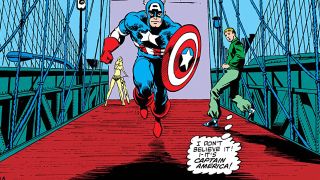It was a different time, shaded now by the mists. Back in the day, the U.S.S.R. wasn't on our radar much, Iran was the United States' mortal enemy, we were in the midst of an energy crisis, and O.J. Simpson was in comic books (which cost 40 to 50 cents each) – as a spokesman for Dingo cowboy boots, and probably had yet to buy his first pair of Bruno Maglis. It was 1980, and Captain America had a brief shining moment under the creative influence of writer Roger Stern and penciler John Byrne.
While their tenure together on the title only lasted nine issues, from #247 to #255, their run was, and still is, one of Cap's greatest adventures.
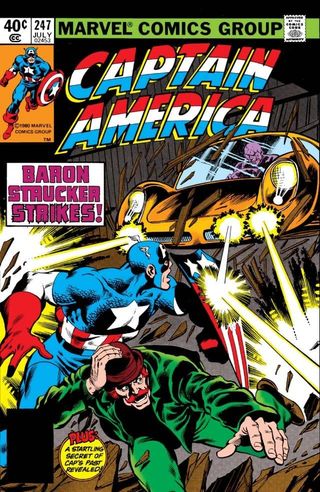
For Stern, the job of writing Captain America came just after he had decided to hang up his editor hat at Marvel, and write comics full-time.
"I had been the editor of Captain America for a couple of years in the late '70s, and despite the efforts of several writers and artists - often under battlefield conditions - I was never able to get the kind of stories I really wanted," Stern says. "That's not to say that the stories were bad - as I recall, some were pretty good. But Cap stories should be great!
"When I finally left the editorial grind to write full-time, it was suggested that I should write Cap. It was 'put up or shut up' time. And, being young and foolish, I figured, 'Okay, I'll do it.' Fortunately, I had John there every month, making everything look really good."
The two began work with Captain America #247, patriotically enough entitled, 'By the Day's Early Light.' The story teamed Cap with Dum-Dum Dugan in an effort to clear up some of the misconceptions (today, we call them continuity blunders) regarding Cap's past.
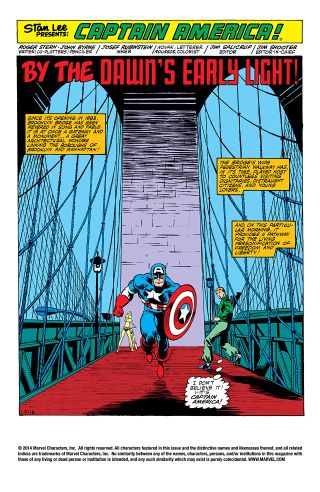
For example, for years, Cap had no middle name, but then, it was revealed his middle name was 'Grant,' giving long-time Cap fans apoplexy. No worry, Cap and Dum-Dum found one of Steve's old army footlocker that contained, among other things, his original triangular shield and his old journal. In what was called 'setting the record straight' then and 'retcon' now, readers learned that shortly after he went through the Super Soldier program, Steve was, well, brainwashed by the army to prevent him from revealing too much should he ever be captured and tortured.
And you thought false memories were invented by Chris Claremont to keep Wolverine from getting stale! According to the script, Cap's origin may still be a mystery: "I have no idea how many false memories they plugged into me. I pray that I never find out."
Fans can consider it 'prayers answered' that future writers didn't take Cap down this road too many times.
As a counterpoint to Steve's reminiscing, the three-issue storyline also reintroduced Baron Strucker (in a way), featured a Cap/Nick Fury team up to beat all, made Dragon Man a respectable (if misunderstood) character, and threw the Machinesmith into the mix. It had all the fun of a summer blockbuster with monsters and robots to boot.
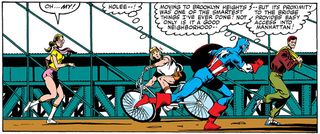
But it wasn't always about Cap.
Something Stern and Byrne worked to flesh out during their run was Captain America's place in the modern world, a common theme in the series that gets revisited every now and again. In the days when the issues came out, Marvel would often survey their readers, and in issue #250, 26.6% of the readers responding said that "dealing with modern life" was the biggest problem facing Captain America. (At the same time, 20.8% of respondents said that the Iranian situation was the nation's #1 problem, and 9.0% said Soviet expansionism was the #1 problem for the United States…different times, different times.)
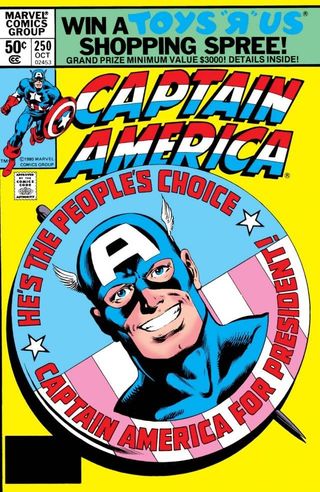
"Cap's the classic 'man out of his time' super-hero," Stern says. "Here's a guy who - even then - was physically younger than me, but part of my father's generation. He was a child of the depression and a man of the Second World War. Those two events had a profound effect on the world. They created the America that we live in. And he's Captain America - it would be criminal to ignore his past
"Cap is fascinated by the world he awoke to find," the writer continues. "He's certainly disappointed by some of the turns we've taken along the way - and frustrated by some of the things that he and we have lost. But human nature didn't change much while he was out of the picture. The technology is what's different ... even though we still don't have flying cars, darn it. I'd say Cap is more concerned than worried. And he never says die!"
At the same time, the creators continued along with the idea of Steve Rogers private life, giving him a romantic interest in Bernie Rosenthal, and plenty of friends in his Brooklyn Heights apartment building (located at 569 Leaman Place…close enough to a certain artist who lived in Brooklyn Heights at the time). True, Bernie had a thing for chokers and bell-bottoms and would've gotten her petite rear kicked by Sharon Carter, but hey, Sharon was 'dead' back then, and Bernie cooked a great (platonic) breakfast.
As compared to his rather minimal life as Steve Rogers now, Cap was having a swingin' good time under Stern and Byrne.

For issue #250, the duo told a story with a high 'duh' factor. Not that it was silly by any means, but 'duh' in the sense that no one had tried it before. It was an election year, after all, so why not have Cap run for president?
The story, according to Stern, actually began a year previously, when Roger McKenzie and Don Perlin were the creative team on Captain America, and Stern was an editor at Marvel. McKenzie and Perlin wanted Cap to run for office and win, setting up four years' worth of stories in and around Washington, D.C., and the duties of the president. While it could've made for a great pop-culture civics lesson, Stern 86'd the idea, mainly due to the fact that he wasn't comfortable asking readers to suspend their disbelief for that long. This was in the days before Magneto was given his own country to rule.
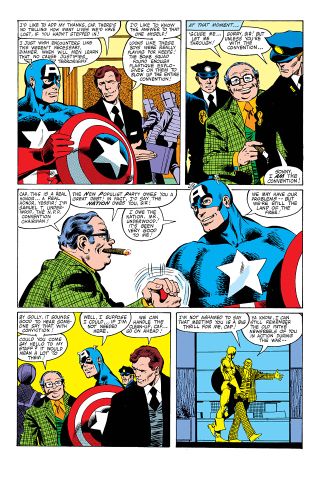
"Mac and Don wanted Cap to run for president -- and win!" Stern says. "That involved more disbelief than I was willing to suspend. I mean, the president is the most visible member of the federal government. He's on the news virtually every night. You can have fictional members of Congress - too many people don't know the name of their own congressman or -woman. But everybody knows who the president is, and the readers would know that he wasn't Captain America. It was surreal enough that Reagan was elected, after all!"
But a year later, when chatting with Marvel's Ralph Macchio and Jim Shooter, the idea came up again, and Shooter suggested that the story be about why Captain America wouldn't run for president. Sparks flew and the story was hammered out.
In the end, Stern and Byrne weren't trying to make a heavy-handed political comment about America. "John and I were just trying to come up with a different kind of story for issue #250 ... and maybe say something about the importance of symbols and idealism," Stern says.
Stern and Byrne joyously played with the unlikely pairing of Batroc the Leaper and Mister Hyde in Captain America #251 - #252, beginning with Batroc breaking Hyde out of Ryker's Island for the $5 million Hyde had promised to anyone who'd free him from prison. The look on Batroc's face when he realizes Hyde has tricked him is priceless.


While the villains plotted and planned how they'd hold the entire city of New York hostage, Stern and Byrne focused on the day-to-day life of Steve Rogers, (then) freelance artist. Yup – back in the day, Steve had the same day job as Kyle Rayner. Oddly, very few found it odd that Cap, who spent his time fighting threats to America would take off the mask and storyboard out ads for cars and household products. Weird. One would think Captain America's alter ego would be a little more… macho.
Anyway, the creators managed to tell a great story I the two-parter, complete with their trademark cliffhanger ending worthy of a Republic serial – this time, with Cap chained to the front of the Roxxon tanker as Hyde accelerated it to ramming speed and aimed it at the docks. As for the ending – well…we're not going to ruin everything for you here.
Issues # 253 and #254 reunited Captain America with his Invaders pals in England – well, Spitfire and Union Jack, anyway. The story kicked off when Lord Falsworth, the elderly alter ego of Union Jack became convinced that their vampiric foe from World War II, Baron Blood, had returned.

"That grew out of a story idea that John had originally floated when he was drawing Avengers," Stern says. "We never got around to using it there, and I think it really worked better as a Cap story. There was a lot of neat stuff in the old Invaders series. John and I were both big Frank Robbins fans."
The two-part story lovingly touched on Cap's adventures with the Invaders, and included some rather poignant moments when the now-elderly Spitfire and Union Jack see and react to the 'forever-young' Steve Rogers. The story also included little creepy tidbits that almost seem more at home in a Warren Ellis story, things such as the British government keeping staked vampire skeletons in the dungeons of the Tower of London. Learning that the government kept them instead of destroying them outright begs interesting questions, that Stern nor Byrne ever intended, such as when would the crown see the need to remove the stake and return the vampire to life?
{Ahem} digressions aside, the climax of the Baron Blood storyline included something that's still pretty rare for Captain America – he killed his enemy. All right, so it was a vampire, and technically, he was the 'undead,' but still, by using his shield to separate Blood's head from the rest of his body, Cap did end the existence of the creature. And no – it wasn't accomplished by a quick throw of the shield – Cap was holding Blood down by sitting on his chest while the vampire struggled underneath him. To be fair, it was one of the only options Cap had – sure, he'd opened the curtains on the vampire, letting in the sunlight, but it was the setting sun, meaning Blood was ready for an all-nighter. One that the already battle-weary Cap would surely lose.

As it would be now, it was a surprising move. Cap may lecture, punch, grapple, and hit bad guys with his shield, but rarely – if ever – does he kill them, and never with his shield. According to Stern, there were no editorial problems with what could've ended up as a very controversial scene.
"It was most certainly one of those 'last resort' moments," Stern says. "Cap hated doing it, but he really had no choice. In fact, I had Cap saying something like 'God forgive me!' just before he brought his shield down. But that was deleted [and changed to 'No…Oh, No.'] - someone probably thought our more religious readers would take offense."
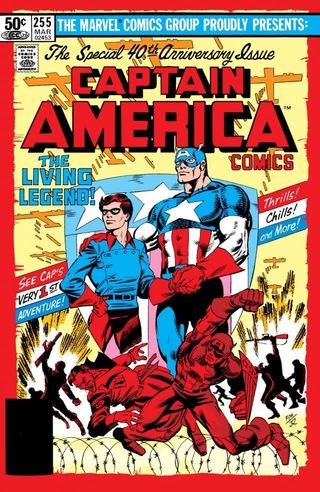
Following the Baron Blood storyline, put their spin on a classic, and retold Cap's origin in issue #255, just in time for Captain America's 40th anniversary. The two fleshed out parts of the origin, adding little details such as why Cap moved from a mask detached from the rest of his costume to one that's connected (a Nazi almost knocked it off), and revisited classic Cap moments, such as FDR giving him the round shield to replace the triangular one.
The issue gave Stern a chance to re-tell and smooth out one of the Golden Age's classic stories, and it also gave Byrne a chance to offer his take on scenes originally drawn by Jack Kirby. In fact, the origin story was taken directly from Byrne's pencils, which he finished, rather than having an inker. And the cover was by some guy named Frank Miller.
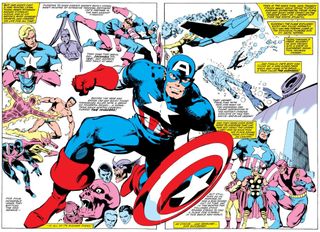
According to the writer, for all involved, it was a labor of love.
"It's a great story!" Stern enthuses. "Probably one of the five or six best origins ever! At the time, it hadn't been retold in over a decade, and it was our big chance to shine it up for a new generation of readers, and reconcile some of the variations that had cropped up over the years. And, besides, Mark Gruenwald challenged us to do it. I guess we did okay. That single story has been reprinted at least four times that I know of."
Sadly, the all-too-brief Stern/Byrne run on Captain America came to an end with that issue. While both were interested in continuing on the books, and had at least one major three-part story lined up, both moved on due to editorial pressure over scheduling difficulties.
"I recall, there was a lot of pressure on Jim Salicrup, our editor, to get the books on time," Stern recalls. "I think the book might have been behind schedule when we started. Anyway, Jim wanted to slot in a fill-in story, which I felt was unnecessary at that point. I thought a fill-in would wreck the momentum that we'd built up, and I was confident that we could get ahead on our own. I'd even plotted all three issues of the big Red Skull story we'd planned. But I was overruled. So I decided to take back the plots for the Red Skull story, tear up the vouchers, and made a clean break of it."
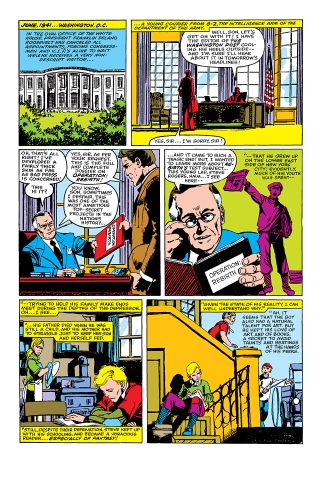
"I wish it hadn't ended, though. I really, really liked writing Cap. And, hey, don't go jumping all over Jim Salicrup - he's a good guy and had to make a lot of hard decisions. I might have done the same thing if I'd been in his shoes."
In the 20 years since the nine-issue run hit, the U.S.S.R. has dissolved, the U.S. has relations with Iran that are approaching normal, and O.J. will forevermore be, in many people's eyes, a murderer. While lots of things change in two decades, Stern can look back on the issues and still feel some pride swell up.
"As for how they hold up today? Not bad ... not bad at all," Stern says. "John's grown so much as an artist since then, and hopefully I'm a better writer, but overall I'm pretty happy with those nine issues. People still approach me at conventions, wanting me to deface those issues with my autograph, so I guess we did all right."
